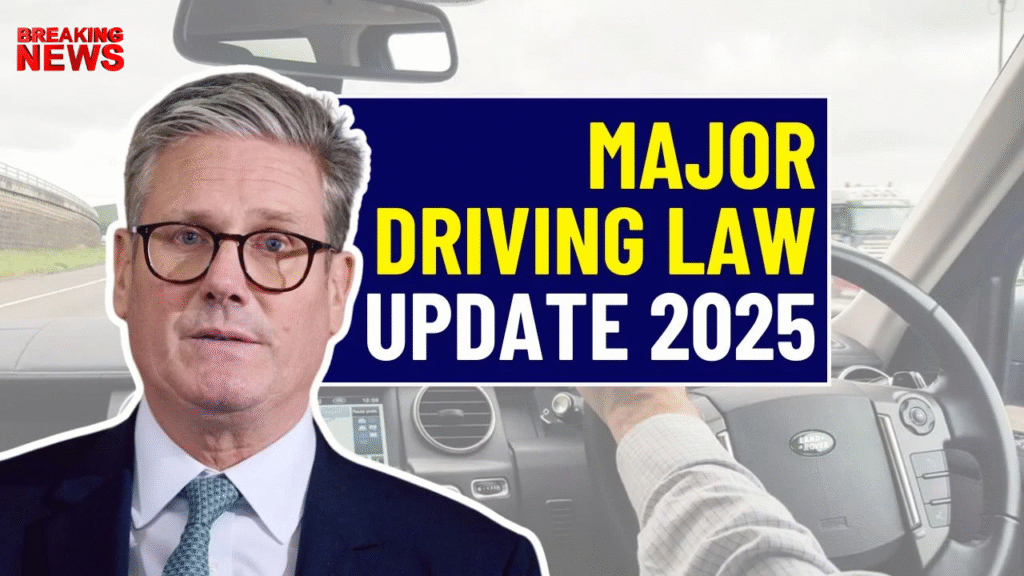The year 2025 marks a major transition for UK motorists, with sweeping updates to driving laws that touch every aspect of motoring. From tighter eco-regulations to tech-driven enforcement, these rules will influence how vehicles are used, insured, and maintained. Drivers will also need to adapt to evolving road conditions, stricter penalties, and the accelerating shift toward electric and autonomous mobility.
Stricter Emission Standards
Environmental targets are tightening in 2025. New rules will enforce lower vehicle emissions, pushing both manufacturers and everyday drivers toward compliance with the UK’s net-zero commitments. Non-compliant vehicles—particularly older petrol and diesel models—may face higher charges and penalties in clean air zones.
UK Driving Law Updates 2025 Expansion of Ultra Low Emission Zones
More cities will adopt Ultra Low Emission Zones (ULEZ), charging non-compliant vehicles daily fees ranging from £12.50 to £20. While this comes as a challenge for older car owners, incentives such as scrappage programs and exemptions for EV drivers will aid in transitioning to greener cars.
UK Driving Law Updates 2025 New Rules for EV Charging
Electric vehicle owners will see more accessible and transparent charging systems. All new public chargers must accept contactless payments and provide clear tariff information. Additionally, measures to curb excessive pricing at charging points will make EV use fairer for drivers.
Updates to Fuel Duty and Road Tax
With growing EV adoption reducing fuel tax revenue, the government is preparing long-term tax reforms. Pay-per-mile systems and higher duty on high-emission vehicles are on the table, potentially reshaping how drivers are taxed in the future.
Tougher Mobile Phone Laws
Using a phone behind the wheel in 2025 carries stricter penalties. Activities like scrolling apps or taking photos—even when stopped at traffic lights—can result in a £200 fine and six penalty points. Repeat offenders risk losing their licence entirely.
Smart Motorway Safety Improvements
Smart motorways will feature shorter-interval refuge areas and enhanced detection technology to improve safety. Enforcement of variable speed limits and red “X” lane closures will be stricter, ensuring compliance and smoother traffic flow.
Insurance and MOT Changes
-
Pay-as-you-drive motor insurance policies will expand, rewarding lower-mileage drivers.
-
MOT checks for hybrid and EVs will now include mandatory battery health inspections, safeguarding both road safety and second-hand EV buyers.
Autonomous Vehicle Regulations
2025 introduces a legal framework for autonomous vehicles. Test areas are expanding, and new insurance rules will clarify liability in case of accidents involving self-driving technology. While mainstream adoption is still ahead, regulated rollouts start this year.
Drink and Drug Driving Crackdown
The government may align England and Wales with Scotland’s stricter alcohol limits. Enhanced roadside drug testing will also be introduced, making even prescribed medications subject to enforcement if they impair driving ability.
Parking and Speeding Enforcement
Local councils gain more power to issue fines via roadside cameras for offences such as illegal parking, bus lane misuse, or speeding. Repeat offenders will see steeper fines, emphasizing fair but tougher enforcement.
Road Safety Campaigns
A series of nationwide awareness campaigns will highlight distracted driving, EV readiness, and regular vehicle maintenance. These initiatives aim to help motorists adapt responsibly to 2025’s changes.
What Drivers Should Do Now
-
Check whether your car meets tighter emission standards.
-
Review insurance and MOT requirements, especially if driving an EV or hybrid.
-
Stay updated on local council rules in clean air and emission zones.
-
Avoid fines by sticking to stricter mobile phone and smart motorway laws.
Conclusion
UK motoring in 2025 enters a new era of cleaner, safer, and more connected driving. While these changes may feel demanding, they pave the way for greener transport, fewer accidents, and smarter road use. By preparing early, drivers can stay compliant, avoid unnecessary fines, and enjoy a smoother transition into the future of mobility.
